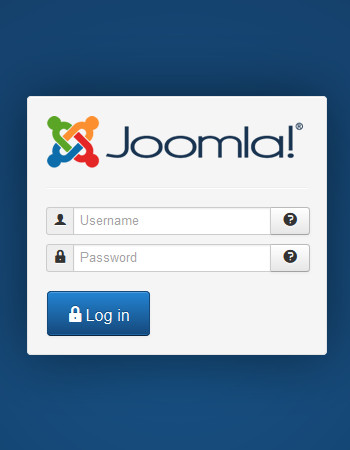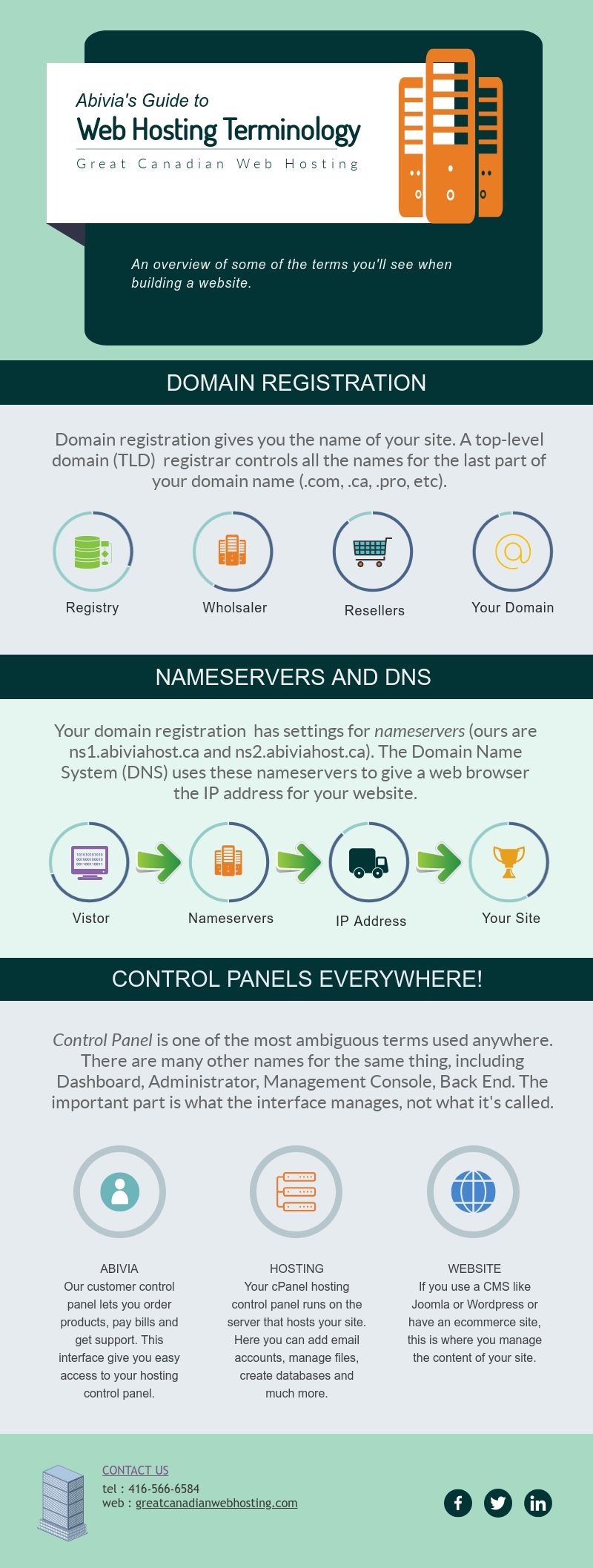Confused about web hosting, domain registration, and control panels? Our handy guide explains it all in simple terms.
We'll answer these questions in easy to understand language. If you found this page, you're probably just starting out with a new website and are completely confused by all the terms that people keep using to describe it. Here's a question we hear frequently:
I just want a simple website, why is all this stuff so complicated?
It can be complicated, but there's a good reason for everything and in this article we'll try to explain the most common terms and answer some of questions often posed by first time web owners. We hope you will come away with a basic understanding of all the concepts and feel more confident.
Quick Answers
Check out this infographic for an overview. We'll go into full detail below.
Your Login Credentials are typically a user name and password, but if you have enabled something like Two Factor Authentication (2FA), then your login might require an extra step, for example entering a code that's been sent to your mobile phone. 2FA is intended to make it harder for unauthorized people to gain access to whatever it is that you're logging into.
A Domain Name is the human friendly name used to identify your web site on the Internet. Well known domain names are google.com and facebook.com. The "dot com" part of these names is called the Top-Level Domain (TLD). Common TLDs are .com, .net, and .org. There are also national TLDs such as .ca for Canada, and many new theme-specific TLDs like .store and .pro.
A Domain Registrar is a business authorized to register domain names. Most hosting companies register domains through a wholesaler. There is no need to register your domain with the same company that hosts your web site.
A Web Host is a company that operates servers (high powered computers) to offer Internet services such as website hosting, email, and File Transfer (FTP).
Web hosts typically have two main ways for interacting, the first is a system that lets you purchase services, pay bills, and get support. The second is the interface that lets you manage your web hosting. Unfortunately, both are frequently referred to as a Control Panel. The first is the customer control panel, responsible for billing and support. The second is the hosting control panel. The Hosting panel runs on the server that hosts a website and is responsible for managing emails, databases, and so on. The most popular control panel application is called cPanel, which is what we use. Other hosts might use another popular product called Plesk, or they may have developed a custom control panel. Many control panels also offer web mail access.
Most websites are built with an application designed for that purpose. The most common types of application are Content Management Systems (CMS), Forums, and Online Stores (typically called ecomm, short for for Electronic Commerce).
If your site is built using a CMS (popular CMS systems are Wordpress, Joomla, and Drupal) then it will have two ways to interact. The first is what visitors to your website see, the second is the interface that you use to update your site with new content. When you log in to your CMS you see this second interface. Different CMS systems use different names for this interface, but common names are Dashboard, Back-End, Manager, and System Administrator. We call this interface your website control panel.
Building Your Website
Some will start by building a web site on a hosted service (for example wordpress.com or joomla.com) or with a web creation tool (for example Website Tonight or wix.com). As sites grow they can reach limitations and want to move to using their own domain. Here it is critical to be using an open solution such as Joomla or Wordpress, because there are well established ways to move your site. If you used a proprietary tool you are likely to be either locked in or you will lose significant functionality when making the transition.
Domain Registration
The systems that route data through the Internet use a series of numbers that aren't very human friendly. Every device on the net, including your computer, your tablet, and your phone, has an Internet address, which is a series of numbers. This is called an IP address. The IP stands for "Internet Protocol" For most devices, this address isn't one permanent value. For example the IP address of your phone will change as you move from place to place.
There are now two types of IP address that are in common use. A version 4 address is a set of four numbers separated by periods, for example 54.39.49.63. As the number of devices connected to the internet grows, version 6 addresses are coming into more common use. An IPv6 address is much more complicated and can represented by up to eight 16 bit hexadecimal numbers, for example 2001:0db8:85a3:0000:0000:8a2e:0370:7334. A more detailed explanation of IPv6 is available on Wikipedia.
While this system works great for computers, it is pretty difficult for people. This is where domains and the Domain Name System comes in. You'll see the acronym DNS several times in your travels. Your domain is the name that people, and other servers, use to find you on the Internet. When you type www.google.com, DNS servers translate that name you understand into an IP address that your device understands, and then it uses the IP address to connect to Google.
You buy a domain name from a Domain Registrar. Most hosting companies, including Abivia, will act as domain registrars. Because a domain is unique, the system is administered by international and national bodies who maintain a central database. Internationally, ICANN, the Internet Corporation for Assigned Names and Numbers, is responsible for maintaining the master database of domain names that end in many common suffixes (.com, ,net, and dozens more). National associations are usually responsible for administering country code TLDs, for example in Canada, the body is CIRA, the Canadian Internet Registration Authority. There is usually a hierarchy of businesses involved here, starting with the administration body, then down through a wholesaler to the retail registrar.
Customer Control Panel
The Customer Control Panel is an application that you use to purchase products and services and to open support requests. If you registered your domain with us, this is also where you can set the DNS servers for the domain. Your user name on the portal is the email address you used when you created the account. If you forget your password, you can request a reset and we'll mail you a temporary password. Here's what our login page looks like:

You can also perform many of the most commonly used features in your hosting control panel right from the customer panel.
Hosting Control Panel (cPanel)
Your hosting control panel can typically be accessed by adding /cpanel to your domain name, as in www.example.com/cpanel. This redirects to a secure login. When you signed up for hosting with us, you should have received a welcome email that contains your user name and password. You can also connect to cPanel via the customer control panel.

Because our control panels are integrated, you can also perform many customer panel functions from cPanel:

CMS Administration
The administrative login for your content management system or store depends on the specific package you're using. The login credentials are set when you or your web developer installs the application. If you no longer have the password, we may be able to help you recover access, however if you're not on a managed support plan there may be a charge for this service.
Here are the login screens for Joomla and Wordperfect:


Porting Your Site to Abivia
If you already have a web site, it may be possible to move your site over with relative ease. Here are some typical scenarios. If you don't see your listed here, please open a support request and we'll see if a transfer is possible.
| Site Source | Transfer information* |
| From another cPanel host | Make a full cPanel backup and let us know where we can copy it from (usually a FTP server). Your account should move over with all existing features intact. |
| Move a Joomla site | Use Akeeba Backup (www.akeebabackup.com) to make a backup of your site. Transfer the files to your Abivia account, create a new database, and follow the Akeeba instructions to restore your site. |
| Move a Wordpress Site | Use a Wordpress backup plugin to back up your site (we like BackWPup). Transfer the files to your Abivia account, create a new database, and follow the plugin instructions to restore your site. |
| Move from wordpress.com | We have tools that help with this process. Contact us for assistance. |
| Website Tonight (GoDaddy) | Transfer not possible |
| squarespace.com weebly.com wix.com |
Transfer not possible |
* Subject to change as new information becomes available.


